 W
WThe Temple of Apollo is one of the most important ancient Greek monuments on Ortygia, in front of the Piazza Pancali in Syracuse, Sicily, Italy.
 W
WThe Temple of Athena is a hexastyle peripteral Doric temple built in Syracuse in the 5th century BC by the tyrant Gelo after his victory over the Carthaginians at the Battle of Himera. The temple was preceded by a cult site which dated back to the 8th century BC, with an altar discovered in excavation at the beginning of the twentieth century, and by an earlier temple from the middle of the sixth century BC.
 W
WThe Temple of Athena is a Greek temple found at Paestum, in Capaccio Paestum, a comune in the province of Salerno in the Campania region of south-western Italy. It was built around 500 BC and was for some time incorrectly thought to have been dedicated to Ceres, but as a result of the recovery of numerous statuettes in terracotta depicting Athena, it is now thought to have been dedicated to her.
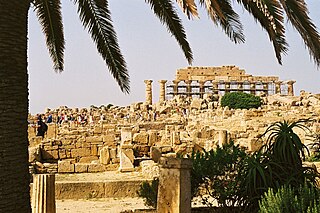 W
WTemple C at Selinus, Trapani (Sicily), is a Greek temple in the doric style. It was one of the most ancient of the temples at Selinus, having probably been built on the acropolis a little after the middle of the sixth century BC, although its dating is controversial. The temple was the object of archaeological research in the nineteenth century and beginning of the twentieth century and later the remains of a long stretch of the northern colonnade received anastylosis in 1929. After a twelve-year-long restoration, in 2011 the colonnade was freed from scaffolding and made properly visible once more.
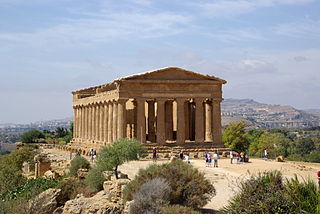 W
WThe Temple of Concordia is an ancient Greek temple in the Valle dei Templi in Agrigento on the south coast of Sicily, Italy. It is the largest and best-preserved Doric temple in Sicily and one of the best-preserved Greek temples in general, especially of the Doric order.
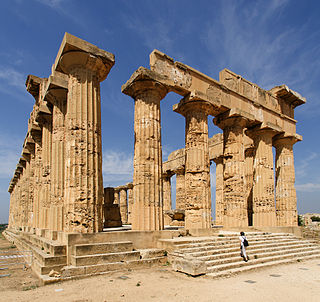 W
WTemple E at Selinus in Sicily is a Greek temple of the Doric order. It is found on the hill to the east of the city's acropolis. Temple E is also known as the Temple of Hera because an inscription found on a votive stela indicates that it was dedicated to Hera; however, some scholars argue that it must have been dedicated to Aphrodite on the basis of structural parallels. It was built towards the middle of the sixth century BC on top of the foundations of a more ancient building. It is the best conserved of the temples of Selinus but its present appearance is the result of anastylosis performed—controversially—in 1959, by the Italian archaeologist Jole Bovio Marconi.
 W
WTemple F at Selinus in Sicily is a Greek temple of the Doric order. It was probably dedicated to Dionysus or Athena and is one of the three temples on the East Hill. The temple's dating is very uncertain, but it probably belongs to the middle of the sixth century BC.
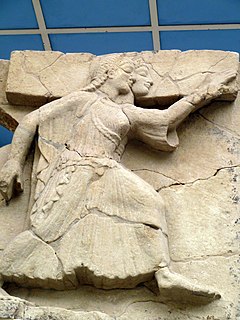 W
WThe Foce del Sele or "mouth of the River Sele" or Heraion at the mouth of the Sele is an archaeological site that contained an Ancient Greek sanctuary complex dedicated to the goddess Hera in Magna Grecia or southern Italy. It was originally located at the mouth of the Sele, about 9 kilometres north from the city of Paestum, then the Greek city of Poseidonia, which is famous for its three standing Greek temples. It is now in the modern commune of Capaccio-Paestum, some 50 miles south of Naples. The sanctuary is about 1.5 kilometres from the modern coast as a result of the deposition of alluvial sediment by the river.
 W
WThe Temple of Hera Lacinia, or Juno Lacinia, otherwise known as Temple D, is a Greek temple in the Valle dei Templi, a section of the ancient city of Agrigentum in Sicily.
 W
WThe Temple of Juno Lacinia is a ruined ancient Greek temple dedicated to Hera (Juno) located on Capo Colonna in Calabria, Italy, near Crotone. The remaining feature is a Doric column with capital, about 27 feet (8.2 m) in height. Remains of marble roof-tiles have been seen on the spot and architectural fragments were excavated in 1886–1887 by the Archaeological Institute of America. The sculptures found were mostly buried again, but a few fragments, some decorative terracottas and a dedicatory inscription to Hera of the 6th century BC, in private possession at Crotone, are described by F. von Duhn in Notizie degli scavi.
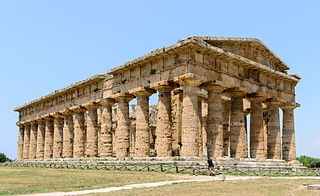 W
WThe Temple of Hera II, is a Greek temple in Paestum, Campania, Italy. It was built in the Doric order around 460–450 BC, just north of the first Hera Temple. If still in use by the 4th-and 5th century, it would have been closed during the persecution of pagans in the late Roman Empire.
 W
WThe Temple of Heracles or Temple of Hercules is an ancient Greek temple in the ancient city of Akragas, located in the Valle dei Templi in Agrigento.
 W
WThe Temple of Olympian Zeus in Agrigento, Sicily was the largest Doric temple ever constructed, although it was never completed and now lies in ruins. It stands in the Valle dei Templi with a number of other major Greek temples.
 W
WThe Temple of Poseidon is a peripteral Doric temple located in the modern piazza Castello in the historic centre of Taranto, Italy. It is the oldest temple in Magna Graecia and the only Greek religious structure still visible in the old town of Taranto. The temple dates to the first quarter of the sixth century BC. It fell into ruin in the Middle Ages and parts of it were reused in the construction of other buildings.
 W
WSegesta was one of the major cities of the Elymians, one of the three indigenous peoples of Sicily. The other major cities of the Elymians were Eryx and Entella. It is located in the northwestern part of Sicily in Italy, near the modern commune of Calatafimi-Segesta in the province of Trapani. The hellenization of Segesta happened very early and had a profound effect on its people.
 W
WThe Tavole Palatine are the remains of a hexastyle peripteral Greek temple of the sixth century BC, dedicated to the goddess Hera. The temple, located near the Bradano river in the south of Italy, was part of a countryside sanctuary and remains of the wall of the temenos and of a very ancient altar are visible.
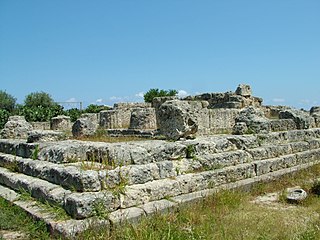 W
WThe Temple of Victory is a Greek temple of the ancient city of Himera located in the archaeological area of Termini Imerese, in the Metropolitan City of Palermo in Sicily, southern Italy.